Misc
First hour exam is Monday (October 7) in class.
Covers material from problem sets 1 through 5.
You’ll have the whole class period.
5 short-answer questions, focusing on applying ideas from the course.
Sample questions are now available in Canvas. Beware that question 5 requires the chain rule (which won’t be on the exam) to solve, but also involves trigonometric derivatives (which will be).
Open book, open notes, open computer as a reference/calculator; closed person.
Questions?
Inverse Functions
Motivation: we now know how to differentiate a lot of functions without knowing how to differentiate their inverses. For example, ex but not ln x, sin x but not sin-1x (aka arcsin x), even x2 but not √x.
But implicit differentiation gives us a way to fix this.
Example
Suppose y = ln x. Can you rewrite that equation into something that only involves functions you know how to differentiate, and then use implicit differentiation to find dy/dx?
Start by raising e to both sides of the equation, to get rid of the logarithm:
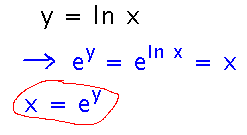
Then do implicit differentiation, much as we did yesterday:
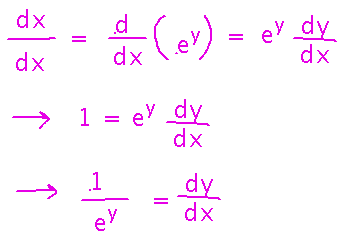
Finally, express the result in terms of x (the original variable of interest). Now we have a new differentiation rule, namely for natural logarithms:
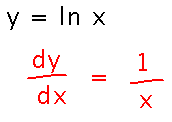
This also implies a new anti-derivative rule, which turns out to be surprisingly useful:

Another Example
Suppose y = √x; find dy/dx.
Do this much as we did above, namely rewrite the original equation in terms we can differentiate, use implicit differentiation, and express result in terms of x:
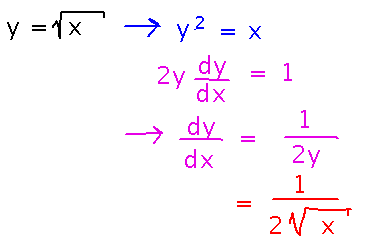
Oddly, this is exactly what we’d get if the power rule for derivatives worked on fractions:

So maybe it does, Let’s see if we can prove it...
Generalizing the Power Rule
If y = x1/n, what is dy/dx?
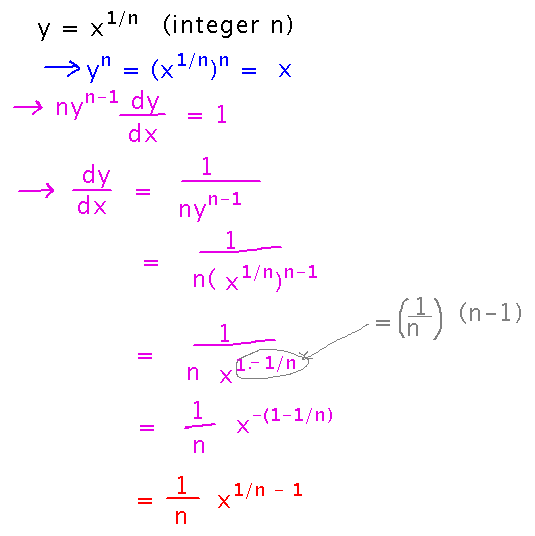
So the power rule does work for fractions of the form 1/n!
Next
(After the exam)
Finish proving the power rule for fractions of the form a/b for integers a and b.
Look at derivatives of inverse trigonometric functions.
Prove a general derivative-of-inverse-function rule.